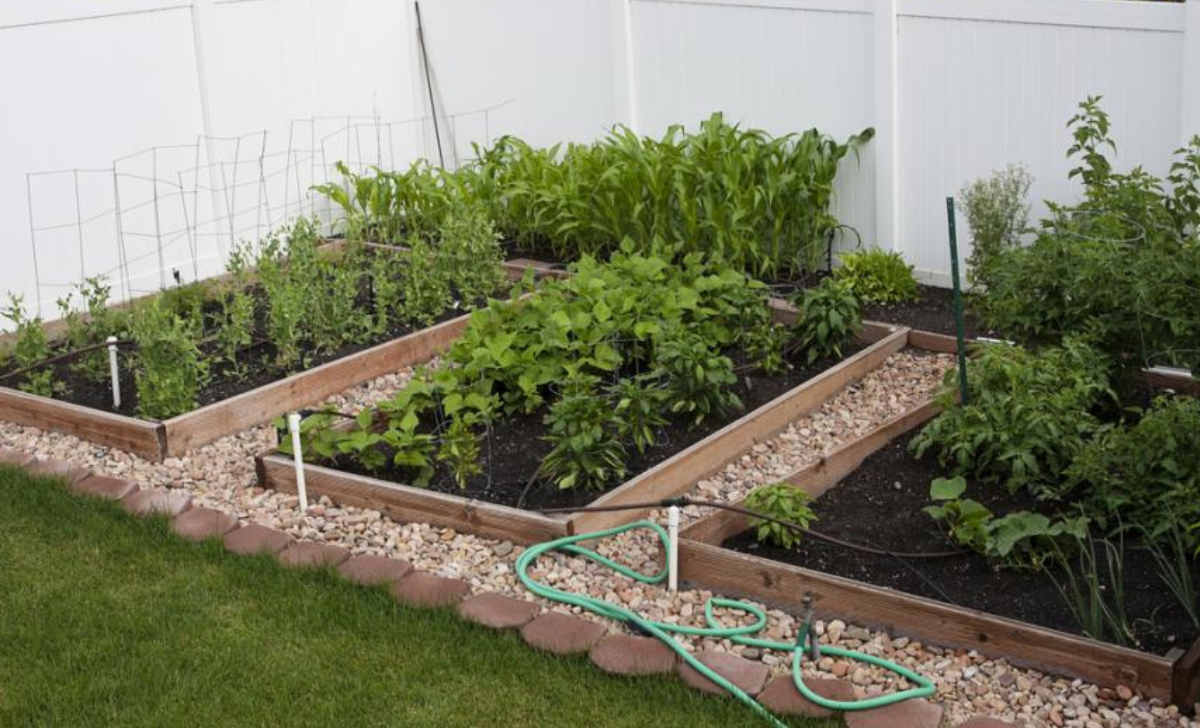Fruit and Veggies 101 - Salad Vegetables: Gardening Guide On How To Grow The Freshest & Ripest Salad Vegetables (Perfect For Beginners) (Fruit and Vegetable Gardening Guides)
Hello there! I’m excited to share my experiences and insights into the world of gardening with you. Gardening is not just a hobby; it’s a fulfilling journey that requires careful planning and a whole lot of patience. In this article, we’ll explore the steps to create your very first garden from scratch. So, let’s get our hands dirty and dive right in!
Selecting Your Garden Type
The first step in your gardening adventure is deciding what type of garden you want. Are you inclined towards a beautiful ornamental garden, or are you eager to grow your own vegetables? Your choice of plants and their sun requirements will dictate the type of garden you create. This initial decision will also influence your soil choice and whether you’ll use containers or plant directly in the ground.
Choosing the Ideal Garden Location

Now that you have a vision for your garden, it’s time to pick the perfect spot. Ensure your chosen location has easy access to water and receives the right amount of sunlight for your plants. Adequate space is essential, so your plants have room to grow and thrive. Whether it’s in your backyard, on your balcony, or your patio, make sure it’s a place where you can enjoy the beauty of your garden.
Testing and Amending Your Soil
Before you start planting, it’s crucial to assess the quality of your soil. Soil testing is especially important for in-ground gardens and existing raised beds. You can either do it yourself or seek assistance from your local university extension. Once you have the results, you’ll know what amendments are necessary to create the perfect environment for your plants, whether it’s adjusting pH levels or adding specific nutrients.
Effective Weed Control Strategies
Weed management is a critical aspect of gardening. Depending on your location, you might deal with occasional weeds or annual battles. Consider using geotextiles or mulch as effective weed barriers. Deciding on your weed control strategy early is vital because materials like geotextiles need to be in place before planting.
Optimizing Sunlight for Your Garden
Sunlight is the lifeblood of your garden. Different plants have varying sunlight requirements, so take note of how much and when sunlight hits your chosen location. This information will help you select plants that will thrive in your unique space. Consult plant tags and do some online research to make informed choices.
Planning Your Garden Layout
As you plan your garden, consider the layout carefully. Ensure there are walkways that provide easy access for watering and maintenance. Keep rows no wider than four feet, so you can comfortably reach all parts of your garden. For more complex gardens, you might even need to create a plot on paper to visualize the arrangement.
Selecting and Caring for Healthy Plants
When it comes to choosing your plants, opt for a reputable nursery for your first year. Look for strong, green, and lush plants with solid leaves and stems. Avoid any signs of discoloration that are not typical for the variety. Pay attention to the consistency of the flowers if they’re already blooming. Healthy plants are the foundation of a successful garden.
Final Steps: Watering, Mulching, and Trellis Installation
Now that you have your plants, it’s time to bring your garden to life. Plant your selections based on the guidelines for each species. Water your plants thoroughly to help the soil settle, ensuring everything is well saturated. Don’t forget to mulch with organic materials like shredded bark to keep the roots cool and retain moisture during hot days.
If your garden includes vertical-growing plants or those that tend to spread, make sure to install trellises promptly. Waiting too long could lead to a tangled mess as your plants grow.
Regular Soil Retesting and Hardening Off
Remember to retest your soil before each growing season to understand its evolving needs. Additionally, harden off your plants by gradually exposing them to outdoor conditions over 7 to 10 days before planting. This process helps your plants adapt to their new environment and thrive.
With these steps and a bit of dedication, you’ll be well on your way to creating a vibrant and flourishing garden that brings joy and beauty to your life. Happy gardening!


